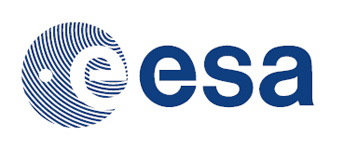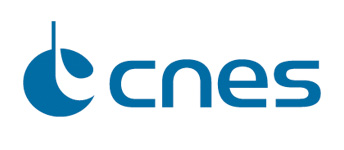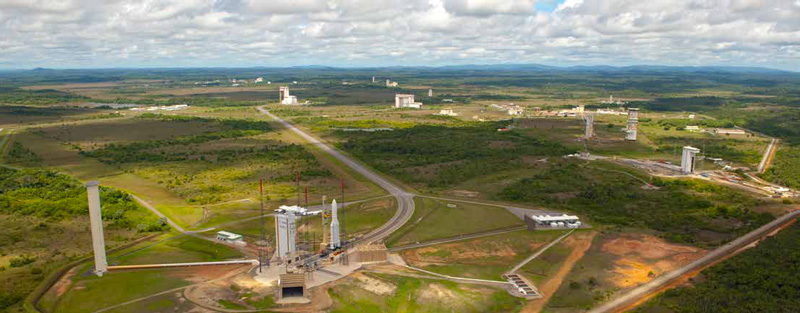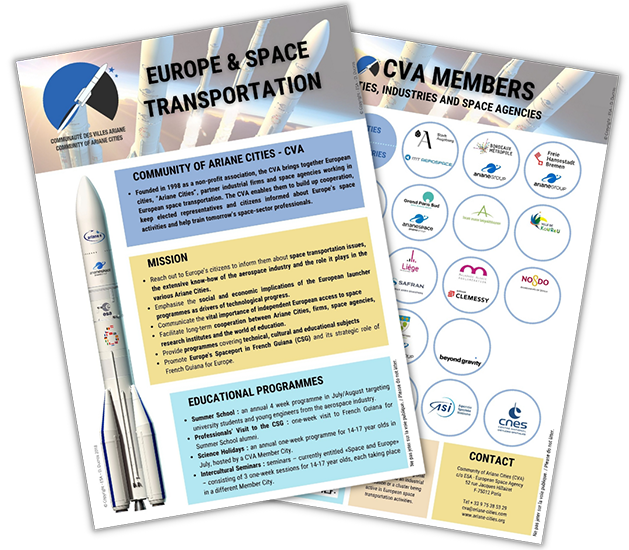
Members
space agencies
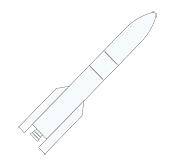
ESA, THE EUROPEAN SPACE AGENCY
Since 1979, launchers developed by ESA have provided Europe with independent access to space from the Guiana Space Centre (CSG), Europe’s Spaceport.
For decades, Ariane 5 was Europe’s flagship heavy-lift launcher, enabling key scientific and commercial missions. It has now been succeeded by Ariane 6, a more flexible and cost-efficient launcher designed to meet evolving market demands. Available in two versions—Ariane 62 and Ariane 64—it can support a wide range of missions, from institutional launches to commercial satellite deployments.
In the small launcher segment, Vega has been a key player since 2012. Its improved successor, Vega-C, offers greater performance and efficiency, ensuring reliable access to Low Earth Orbit (LEO) for scientific, Earth observation, and commercial payloads.
With this modernized launcher family, Europe continues to guarantee independent, reliable, and competitive access to space in a rapidly evolving global market.
CNES, THE FRENCH SPACE AGENCY
The Centre National d’Etudes Spatiales is a state-controlled entity of an industrial or commercial nature (EPIC). It is the government agency responsible for shaping and implementing France’s space policy in Europe.
As such, it designs the space systems of the future, brings space technologies to maturity and guarantees France’s independent access to space.
CNES is a pivotal player in Europe’s space programme, and a major source of initiatives and proposals that aim to maintain France and Europe’s competitive edge. It takes care of France’s participation in ESA programmes.
It designs and executes space programmes with its partners in the scientific community and industry, and is closely involved in many international cooperation programmes – the key to any far-reaching space policy.
CNES, THE FRENCH SPACE AGENCY
The Centre National d’Etudes Spatiales is a state-controlled entity of an industrial or commercial nature (EPIC). It is the government agency responsible for shaping and implementing France’s space policy in Europe.
As such, it designs the space systems of the future, brings space technologies to maturity and guarantees France’s independent access to space.
CNES is a pivotal player in Europe’s space programme, and a major source of initiatives and proposals that aim to maintain France and Europe’s competitive edge. It takes care of France’s participation in ESA programmes.
It designs and executes space programmes with its partners in the scientific community and industry, and is closely involved in many international cooperation programmes – the key to any far-reaching space policy.
Agenzia Spaziale Italiana (ASI)
Established in 1988, the Agenzia Spaziale Italiana (ASI) was created to fund, regulate and coordinate space exploration activities in Italy.
The agency cooperates with different national and international entities active in aerospace research and technology such as the European Space Agency and the industrial Avio.
Today the Italian Space Agency plays a leading role both at a European level, where Italy is the third major contributor to the European Space Agency, and at a global level.
Through the work of the ASI and the Italian industry, Italy continues a research tradition in spacecraft propulsion, in particular as leader of the European programme VEGA, the small rocket designed in Italy.
EUROPE’S SPACEPORT AND LAUNCHERS
A series of Ariane versions has been operated at the CSG over the last 30 years, the present version being the heavylift launcher Ariane 5 (payload capacity of 10 tonnes to Geostationary Transfer Orbit (GTO) and up to 20 tonnes to Low Earth Orbit (LEO), where the International Space Station is positioned).
Ariane was joined in 2011 by the medium-lift launcher Soyuz (3.2 tonnes to GTO), in the framework of cooperation with Russia, and in 2012 by the small launcher Vega (1.5 tonnes to LEO).
This range of launchers is now able to reach all orbits and launch all types of mission.
ESA’s Member States, keen to strengthen industrial competences in the launcher sector, have decided to continue with development of the adapted Ariane 5 ME, a more powerful version than the current Ariane 5 launcher, and to begin development of a new generation launcher, Ariane 6, which will enable Europe to maintain its global no. 1 position.
To know more
EUROPE’S SPACEPORT AND LAUNCHERS
A series of Ariane versions has been operated at the CSG over the last 30 years, the present version being the heavylift launcher Ariane 5 (payload capacity of 10 tonnes to Geostationary Transfer Orbit (GTO) and up to 20 tonnes to Low Earth Orbit (LEO), where the International Space Station is positioned).
Ariane was joined in 2011 by the medium-lift launcher Soyuz (3.2 tonnes to GTO), in the framework of cooperation with Russia, and in 2012 by the small launcher Vega (1.5 tonnes to LEO).
This range of launchers is now able to reach all orbits and launch all types of mission.
ESA’s Member States, keen to strengthen industrial competences in the launcher sector, have decided to continue with development of the adapted Ariane 5 ME, a more powerful version than the current Ariane 5 launcher, and to begin development of a new generation launcher, Ariane 6, which will enable Europe to maintain its global no. 1 position.

